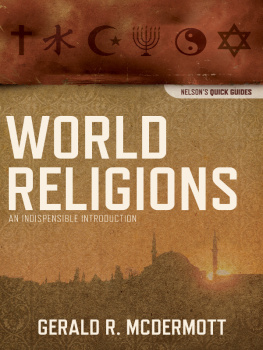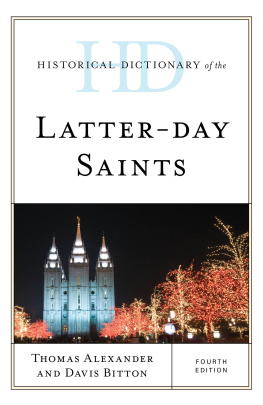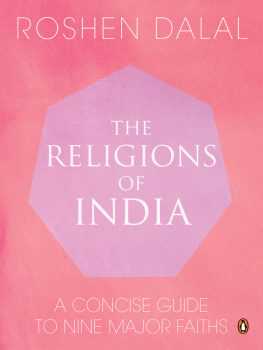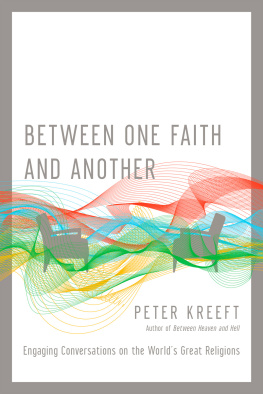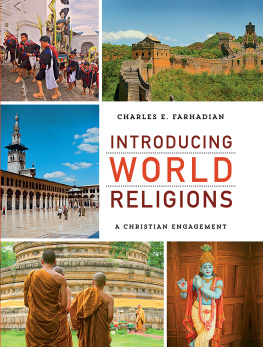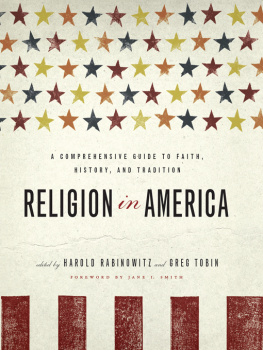RELIGION

IN

AMERICA

A COMPREHENSIVE GUIDE TO
FAITH, HISTORY, AND TRADITION

EDITED BY
HAROLD RABINOWITZ AND GREG TOBIN

Foreword by
Jane I. Smith


STERLING and the distinctive Sterling logo are registered trademarks of Sterling Publishing Co., Inc.
Copyright 2011 by The Reference Works, Inc.
The Credits and Acknowledgments page at the end of this book is a continuation of the copyright notice.
Essays are copyright by the authors and used by permission.
All rights reserved. No part of this publication may be reproduced, stored in a retrieval system, or transmitted, in any form or by any means, electronic, mechanical, photocopying, recording, or otherwise, without prior written
permission from the publisher.
Please note that although the publisher has attempted to confirm that all contact information and web sites are valid at the time of inclusion, such physical and digital addresses are always subject to change.
ISBN 978-1-4027-4301-6 (hardcover)
ISBN 978-1-4027-8320-3 (ebook)
Library of Congress Cataloging-in-Publication Data
Religion in America : a comprehensive guide to faith, history, and tradition / edited by Harold Rabinowitz and Greg Tobin; foreword by Jane I. Smith.
p. cm.
ISBN 978-1-4027-4301-6
1. United StatesReligion. I. Rabinowitz, Harold, 1948- II. Tobin, Greg.
BL2525.R4642 2011
200.973dc23
2011021211
For information about custom editions, special sales, and premium and corporate purchases, please contact Sterling Special Sales at 800-805-5489 or specialsales@sterlingpublishing.com.
2 4 6 8 10 9 7 5 3 1
Produced by
The Reference Works, Inc.
Harold Rabinowitz, Editorial Director
Megan Stearns, Jane Kim Managing Editors
Adam Alexander, Helen W. Clarke, Emily Feldman, Rebecca B. Fineman, Jonathan Heilig, Elizabeth OSullivan, Jessica Sirkin, and Catherine Stolfi Section Editors
Photo Research Edward Robinson
Writers
Jess Austen Michalik
Cynthia Hamilton
Jonathan Heilig
Laura Hoffman
Briana Lugo
Michele Rosenberg
Jessica Sirkin
Sara Werden
Copy Editor
Bonnie Smolen
Indexer
Jay Kreider
Editorial Assistants
Jonathan Londino
Qing Li
DESIGNED BY OXYGEN GRAPHICS, INC. AND THE REFERENCE WORKS, INC.
Dedications
To the memory of Irving and Bertha Rabinowitz, who named me, loved me, and taught me that The righteous shall live by his faith.
(Habakkuk 2:4)
HR
To my fellow American citizens who believe and practice their faiths, and with a special prayer for those who do not believe, that all of us may be appreciative and tolerant of one another.
GT

Motto
Throughout this endeavor, I have tried to be fair and respectful. In the end, I can only hope and this is my solemn prayerthat my pen did not get the better of me.
Sherman A. Jackson
CONTENTS
Eastern Religion on American Soil Lili Zhang
and Naoko Sasaki
BY JANE I. SMITH
HARVARD DIVINITY SCHOOL
R ELIGION IS A REMARKABLY FLEXIBLE PHENOMENON in the history of human experience. It displays a great many faces and features, and involves numerous practices and perspectives. It can also hide with great skill when anti-religious pressures become too strong, as people in many places and ages can testify. But it then has an amazing ability to resurface when the coast is clear and take up residence again in living communities as well as in individual hearts.
The twentieth century gave us numerous examples of the resilience of organized religion. Kemal Attaturk wielded the sword of secularism with great precision in Turkey after World War II, but he failed to remove religion from the private realm and now it is reappearing there publicly. Similar stories can be told of the Soviet Union, China, and many other places where the ashes of destroyed religion turn out to be embers ready to take flame when times are more propitious. Some sociologists have claimed that contemporary Europe may be the exception to the rule that religion dies hard, with Christianity seeming to fade from the consciousness of most of its citizens. But the jury is still out on the future of religion in the European Union, as Muslim countries (of all people) seeking membership encourage Europeans to recall their Christian heritage. There is no question, however, of the presence, visibility, and power of religion in America, as this volume eloquently testifies.
Anyone who wishes to understand what is going on in todays world obviously needs to have some knowledge of the historical, political, sociological, economic, and other conditioning factors that make people and communities act as they do. They also must have some sense of the role that religion continues to play in the lives of most of the worlds people. Western societies are now faced with the reality of religious pluralism within their own borders in ways that raise new questions about toleration and openness. Does the guarantee of the separation of religion and state in the U.S. Constitution protect all forms of religious belief and practice? Should religious groups be allowed to proclaim their faith in public ways or does freedom for one become imposition for another? Americans find themselves obliged to pay attention to the importance of religion, as well as the range of religions represented in the United States, as their country struggles to remain a major player on the world stage.
Sadly, many of the armed conflicts around the globe today are framed (and flamed) by the rhetoric of religion. Hindus are fighting Buddhists in Sri Lanka; Shiites struggle against Sunnis in Iraq; Jews, Muslims, and a few remaining Christians continue to bomb each other in the Middle East. To understand the extent to which such conflicts can accurately be called religious wars, one must know, along with the political histories of the groups involved, something about the religions that are implicated and what expectations are placed on their followers. The religions of America are often directly affected by events overseas, as those events themselves are often directly affected by American foreign policies.
The need for basic information is the most obvious reason why a volume like this is so useful. It provides sharply focused images of the major religions of the world themselves, as well as the divisions and groupings within Christianity in the United States. Religions that were once thought of as over there are now part of Western culture, claiming a home in both East and West. Others have grown and been nourished in the West, and are now themselves having to respond to the rapidly growing pluralism of multireligious western cultures. The second part of the volume addresses the kinds of questions that this pluralism raises, taking the reader into a challenging study of the issues facing communities of worship as well as secular citizens today.




